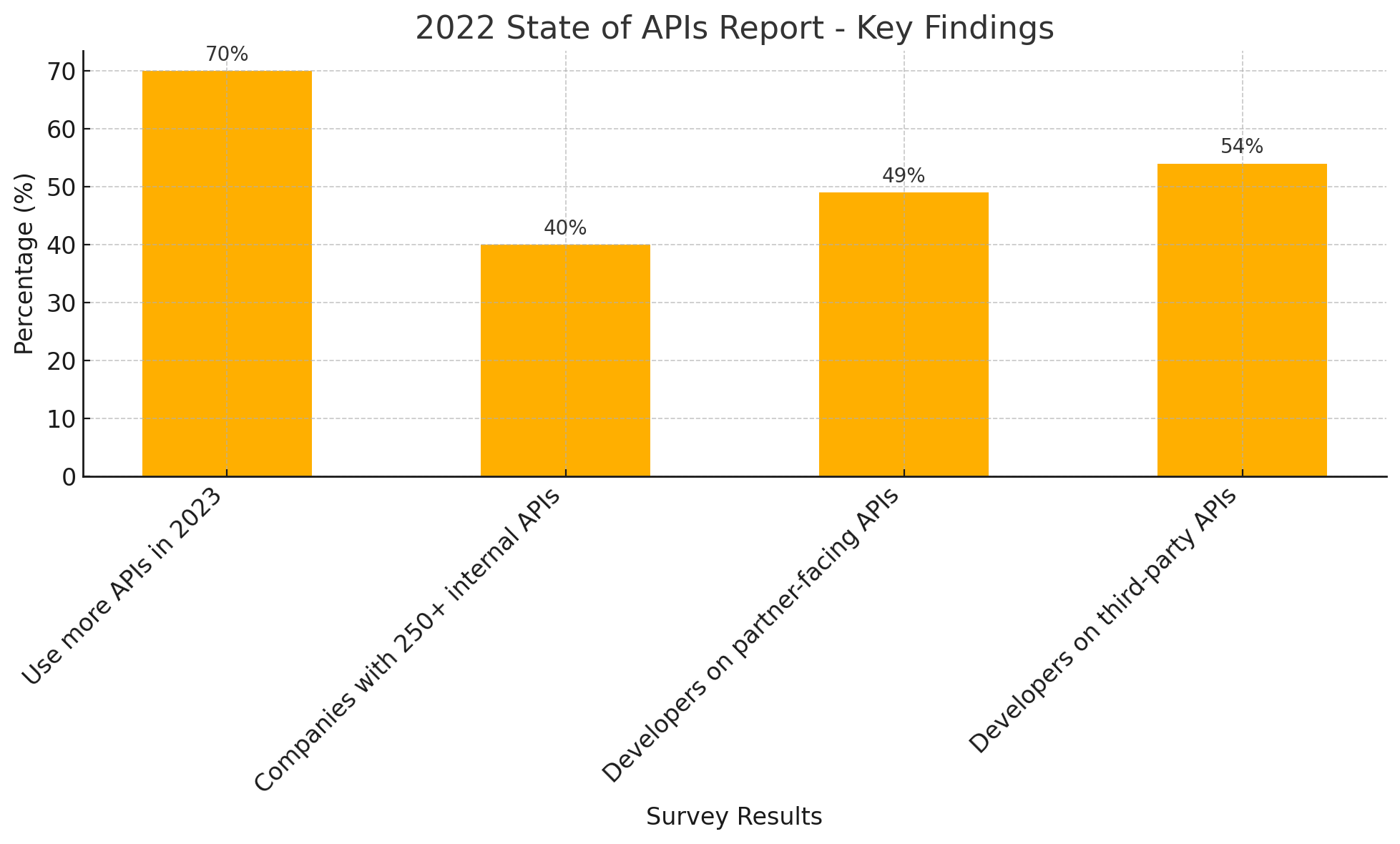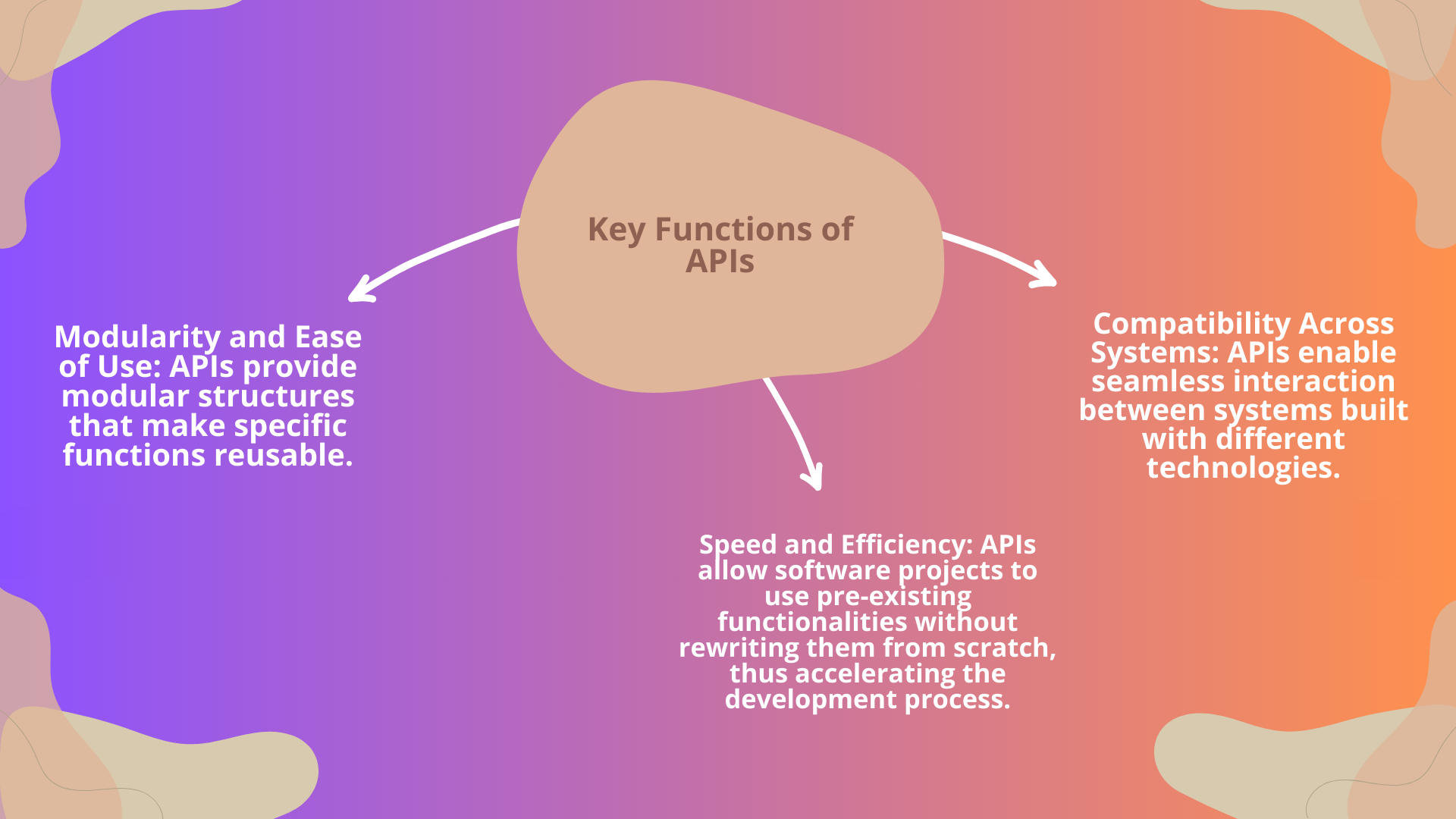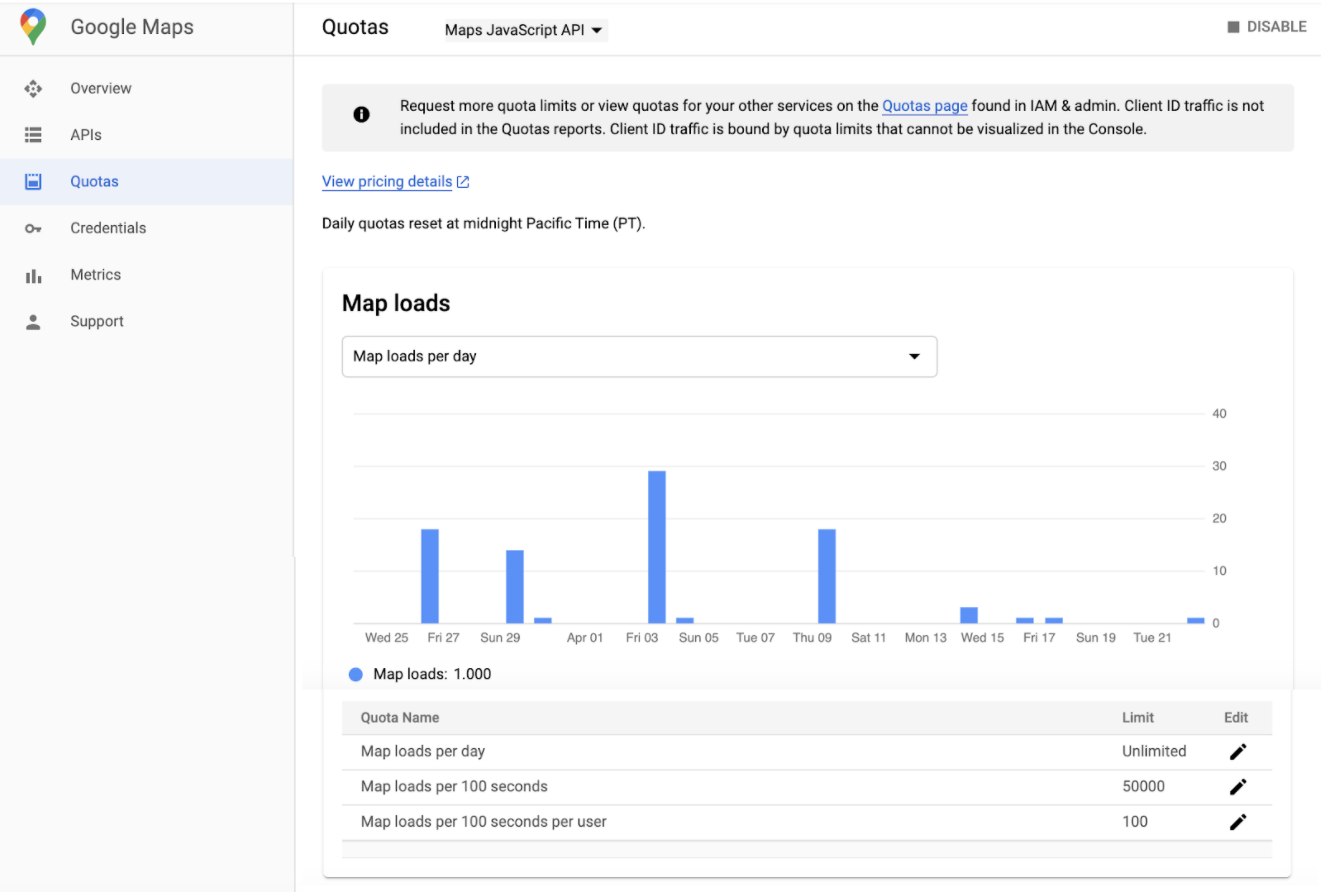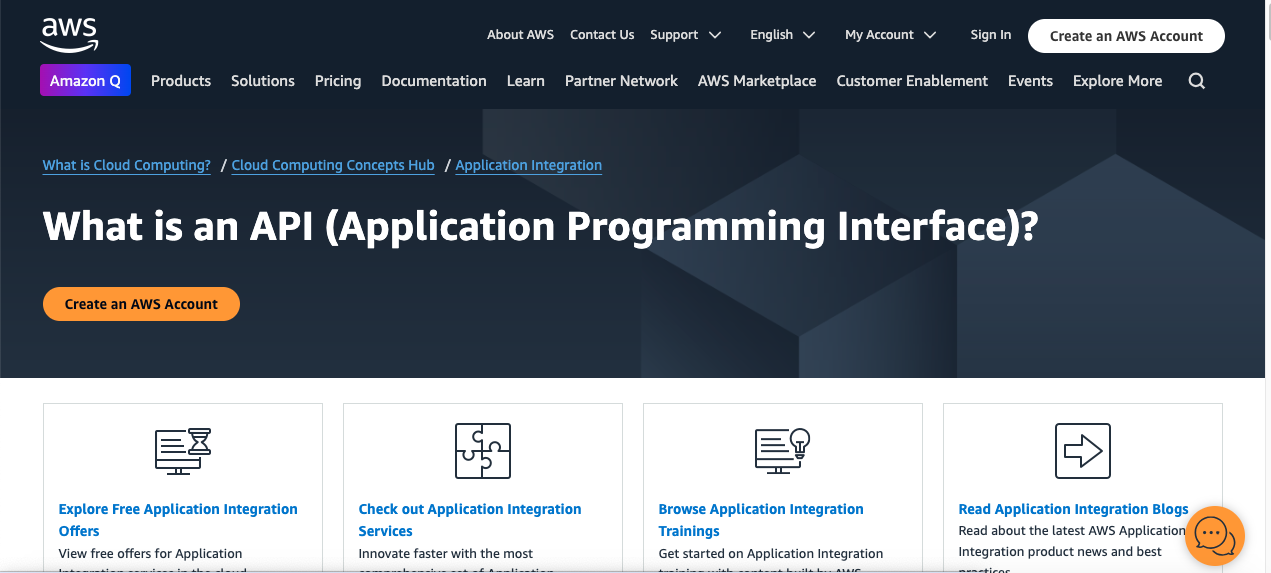APIs (Application Programming Interfaces) play a central role in modern software development by enabling different software systems to interact with each other. These interfaces allow applications to communicate with other software to share data and functionality. Through APIs, developers can build new features and solutions using existing systems, contributing to faster and more efficient project completion. In this article, we will take a closer look at the various roles of APIs in software development and the benefits they provide.
What Do APIs Do?
APIs act as a bridge between software components, allowing these components to share data and functionality. This enables developers to take advantage of existing functions while creating new systems, offering faster solutions. For instance, a mobile app can easily integrate mapping, payment systems, or social media connections through an API. Such integrations not only enhance the user experience but also speed up the development process.
Key Functions of APIs
- Modularity and Ease of Use: APIs provide modular structures that make specific functions reusable. This prevents the need to rewrite the same code multiple times during the software development process.
- Speed and Efficiency: APIs allow software projects to use pre-existing functionalities without rewriting them from scratch, thus accelerating the development process.
- Compatibility Across Systems: APIs enable seamless interaction between systems built with different technologies.
Usage rates of APIs around the world
The chart below visualizes key findings from Rapid’s 2022 State of APIs Report. It shows that:
- 70% of survey respondents expect to use more APIs in 2023 than the previous year, reflecting the growing importance of APIs across industries.
- 40% of large companies (those with over 10,000 employees) manage more than 250 internal APIs, indicating the widespread adoption of APIs within enterprise environments.
- 49% of developers are working on partner-facing APIs, up from 44% in 2021, showing a significant rise in collaboration with external partners.
- 54% of developers work on third-party APIs, an increase from 49% in 2021, demonstrating the growing reliance on external services for software development.
Usage rates of APIs around the world according to data from https://blog.stoplight.io/:

How Do APIs Facilitate Integration Between Services?
APIs standardize the transfer of data and sharing of functionalities from one service to another, ensuring smooth integration between services. For example, an e-commerce platform can use payment provider APIs to enable users to make payments seamlessly.
Benefits of API Integration
Combining Different Services: By using an API, different services can be merged to provide users with an integrated experience. For example, a travel app can pull flight data from one service and hotel information from another.
Fast and Easy Communication: APIs make it quick and easy for an application to retrieve data from or send data to another system.
These integration features offered by APIs make the work of software developers easier and enable applications to offer the services users need smoothly.
How Do APIs Simplify Automation in Software Development?
APIs are powerful tools for automating processes in software development. By automating repetitive tasks, APIs save time and make development processes more efficient. APIs also play a central role in continuous integration and deployment (CI/CD), ensuring that automatic testing and deployment tasks are completed without issues.
Benefits of Automation with APIs
Continuous Integration and Deployment (CI/CD): APIs enable automatic testing and deployment of code, accelerating software development cycles and allowing for immediate detection and correction of errors.
Artificial Intelligence Integration: APIs integrated with artificial intelligence and machine learning tools help predict potential errors in the development process and optimize operations.

REST vs. GraphQL: Choosing the Right API for Your Project
REST and GraphQL are two popular approaches in API design. While REST APIs provide a more traditional and simple approach, GraphQL offers a more flexible and optimized structure for data transfer.
Differences Between REST and GraphQL
REST APIs: These work through fixed URLs and are generally based on predefined data structures. They are widely supported and suitable for most projects.
GraphQL: This allows the client to request only the data it needs, preventing unnecessary data transfer. It is better suited for projects with complex data structures.
Choosing between these two API models depending on the complexity and requirements of your project can have a direct impact on system performance.
The Importance of APIs in Cloud Computing and SaaS Platforms
Cloud computing and SaaS (Software as a Service) platforms expand their functionality and integrate with various services through APIs. Cloud-based APIs allow for easy integration between different systems in cloud environments, making these services more flexible to use.
The Role of APIs in Cloud Computing
Integration of Data and Services: APIs facilitate data sharing between cloud-based services. For example, a cloud storage API enables seamless sharing of files between different applications.
Flexibility and Scalability: APIs allow SaaS platforms to grow faster and more flexibly.
How Do APIs Support Innovation in Mobile and Web Development?
In mobile and web development, APIs are at the heart of innovation. Developers can enrich user experiences by integrating different services into their applications through APIs. This makes both mobile and web applications more dynamic and interactive.
Using APIs in Mobile and Web Applications
Real-Time Data: APIs enhance the user experience by integrating real-time data such as weather or financial data into applications.
Social Media Integration: APIs allow applications to add social sharing and interaction features by integrating with social media platforms.
API Security: How to Protect Your Data?
While APIs offer great ease in data sharing and functionality, they also come with security risks. API security plays a critical role in preventing unauthorized access and data breaches.
Recommendations for Secure API Usage
Authentication and Authorization: Methods such as OAuth should be used to control access to APIs.
Data Encryption: Strong encryption methods should be used for both data transmission and storage to ensure data protection.
Ensuring secure API usage is essential for keeping data safe, and failing to apply the correct security protocols can lead to serious data breaches.
Public and Private APIs: Different Use Scenarios
APIs are divided into two main categories: public APIs and private APIs. Public APIs are open for general use and accessible by third-party developers, while private APIs are designed for internal use only by specific users or organizations.
Use Cases for Public and Private APIs
Public APIs: These are designed for a broad developer audience and provide integration with external applications.
Private APIs: These are designed for internal use within a company and often include stricter security controls.
These two types of APIs serve different needs and should be chosen according to the use case.
The Future of APIs: Trends in Software Development
Looking ahead, APIs are expected to evolve further and play an even bigger role in software development. As technologies such as artificial intelligence, machine learning, and IoT (Internet of Things) become more widespread, the opportunities offered by APIs will expand.
Future API Trends
APIs with Artificial Intelligence: APIs integrated with AI and machine learning will offer smarter and more autonomous software solutions.
The Rise of GraphQL: GraphQL may become more preferred in the future due to the flexibility it offers in data management.
APIs will continue to play a significant role in software development processes, providing more complex integrations and higher performance in the future.
Which companies use APIs?
APIs (Application Programming Interfaces) are used by a wide range of companies across various industries to enhance their digital capabilities, improve service offerings, and integrate with external systems. Here are some examples of companies that heavily rely on APIs:
Tech Giants & Cloud Providers
- Google: Provides APIs for its services like Maps, YouTube, and Cloud services.

- Microsoft: Offers a wide array of APIs, including Azure APIs, Graph API, and Office 365 integration.
- Amazon Web Services (AWS): Provides APIs for cloud infrastructure, storage, and other services.
- Facebook (Meta): Uses APIs for integrations with Instagram, Facebook Graph API, and more.
- Apple: APIs are integral to its ecosystems, including iOS, macOS, and services like Apple Pay and Siri.
- Twitter: Offers APIs for developers to access tweet data and interact with the platform.

E-commerce Platforms
- Amazon: Uses APIs for integrating with its marketplace, inventory, payments, and more.
- Shopify: Provides APIs for developers to build apps, manage stores, and integrate third-party tools.
- eBay: Offers APIs to allow third parties to connect to their platform for listings, inventory management, and order processing.
Financial Services & FinTech
- Stripe: Provides APIs for payment processing, subscriptions, and financial data.
- PayPal: Offers payment APIs for e-commerce, transactions, and invoicing.
- Plaid: APIs for integrating with bank accounts, enabling apps like Venmo and Robinhood to access financial data.
- Square: Uses APIs to provide payment solutions, inventory management, and e-commerce integrations.
Social Media & Communication Platforms
- Slack: Offers APIs to enable integrations with other tools, bots, and workflows.
- LinkedIn: Provides APIs for developers to integrate professional network data, job listings, and more.
- WhatsApp: Offers a business API for customer support and messaging integration.
- Zoom: APIs for integrating video conferencing services into other platforms and apps.
Streaming & Media
- Spotify: Offers APIs to access its vast library of music, create playlists, and interact with users’ music data.
- Netflix: Uses APIs internally and for partners to manage content, users, and recommendations.
- YouTube: Offers a wide range of APIs to integrate video hosting, streaming, and data analytics.
Healthcare & Pharma
- Cerner: Provides APIs for healthcare data exchange and electronic health records (EHR).
- Epic Systems: Offers APIs for healthcare data, patient records, and medical management.
- Pharmaceutical companies: APIs are used for clinical trial data sharing, supply chain, and patient management platforms.
Transportation & Logistics
- Uber: Uses APIs to manage ride-hailing services, integrate mapping, payments, and more.
- Lyft: Provides APIs for ride-sharing services and partner integrations.
- FedEx, UPS, DHL: These logistics companies offer APIs for package tracking, shipping services, and logistics management.
Travel & Hospitality
- Booking.com: Offers APIs for hotel booking management, reservations, and inventory.
- Expedia: Uses APIs for travel booking, flight data, and accommodation services.
- Airbnb: Provides APIs for listing properties, managing reservations, and host services.
Retail & Consumer Services
- Walmart: Uses APIs to manage inventory, e-commerce integrations, and logistics.
- Target: Offers APIs for developers to access product data and manage inventory.
- Best Buy: Provides APIs for product catalog management and order fulfillment.
Telecommunications
- Twilio: Provides communication APIs for SMS, voice, and video integration into apps.
- Vonage: Offers APIs for cloud-based communication services, including voice and SMS.
In summary, companies across all sectors—whether it’s tech, finance, healthcare, retail, or telecommunications—use APIs to enhance their services, automate workflows, and integrate with external platforms. APIs are a critical part of modern digital ecosystems.



